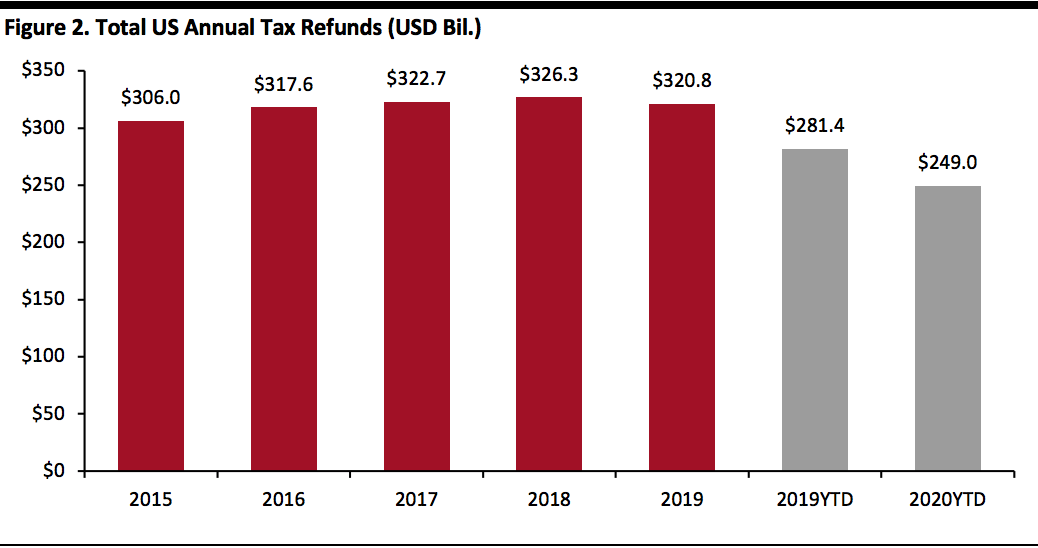Nitheesh NH
Each year, the IRS reports tax return filings and refunds on a weekly basis, starting at the end of January until the April 15 deadline. This year, in response to the ongoing coronavirus outbreak, the US Department of the Treasury (of which the IRS is a division) announced that the deadline to file (and more importantly, to pay) has been extended to July 15.
In this report, we look at what happened in the 17th week of the 2020 tax filing season.
As of May 22, 2020:
 Source: IRS[/caption]
The graph below shows total refunds increasing at a 1.2% CAGR during 2015–2019.
[caption id="attachment_110633" align="aligncenter" width="700"]
Source: IRS[/caption]
The graph below shows total refunds increasing at a 1.2% CAGR during 2015–2019.
[caption id="attachment_110633" align="aligncenter" width="700"] Source: IRS[/caption]
Source: IRS[/caption]
- The IRS had received 133.9 million tax returns and processed 119.7 million. The number of returns received was down 6.2%, while those processed slid by 13.7%. The number of tax filings has dropped year over year as taxpayers take advantage of the 90-day filing extension granted by the IRS due to the coronavirus crisis.
- Of the returns filed already, 89.2% were filed electronically. Of those, 50.5% were prepared by tax professionals, and the remaining 49.5% were self-prepared.
- With the IRS temporarily closing all Taxpayer Assistance Centers and suspending all in-person customer services nationwide, a high number of taxpayers used the IRS website for information: The site logged close to 1.2 billion visits, up 155.2% year over year.
- A total of 89.8 million refunds had been issued as of May 22, totaling $249.0 billion and averaging $2,772 each. The number of refunds issued was down 12.9%, and the total amount refunded was down 11.5%, year over year. However, the average refund grew 1.6% year over year.
- Of those refunds issued, 83.3% were paid using direct deposit. The average direct deposit refund was $2,913, up 1.5% year over year.
 Source: IRS[/caption]
The graph below shows total refunds increasing at a 1.2% CAGR during 2015–2019.
[caption id="attachment_110633" align="aligncenter" width="700"]
Source: IRS[/caption]
The graph below shows total refunds increasing at a 1.2% CAGR during 2015–2019.
[caption id="attachment_110633" align="aligncenter" width="700"] Source: IRS[/caption]
Source: IRS[/caption]